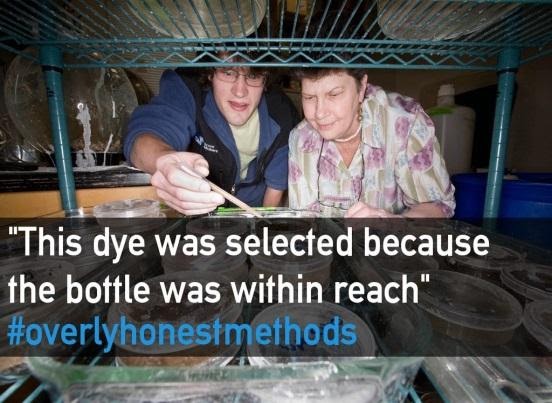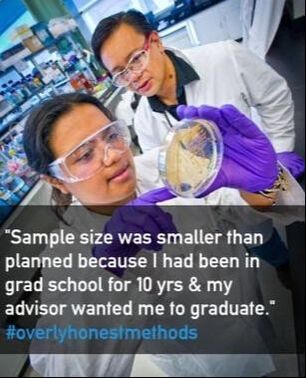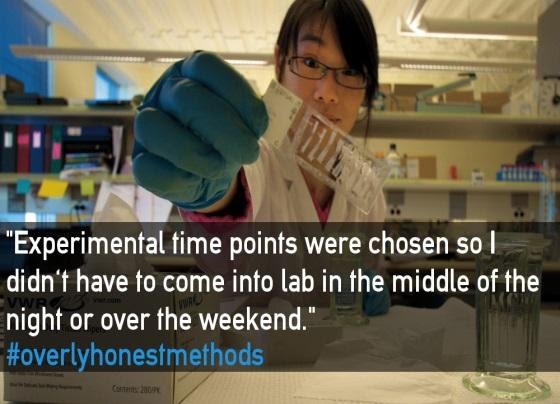The Scientific Method
The Scientific Method has remained the standard in science since... wait for it... the 17th century. It is the process for experimentation that has lead to some of the world's greatest discoveries, and you will be using it for your own projects at home too! Generally, the scientific method can be summarized into 8 easy steps:
This video gives a great overview of the basic steps involved in the scientific method:
- Ask a question. A good scientific question is one that can be easily answered with an experiment. “What” questions are great. “How/why” questions are harder to answer through experimentation. Your question should lead to an answer that has a measurable result. We’ll talk more about thinking about science in this way in just a moment.
- Do background research. For the purposes of this class, background research may be as simple as reviewing the information learned in the lessons to try to answer your question based on what you already know. You may also do background research using the internet, in which case you should be mindful that you are using legitimate resources. Many educational websites are great, and those that end in .org, .gov, or .edu are the most reliable.
- Form a hypothesis. Using the information obtained in your background research, try to answer your own question. A hypothesis commonly takes the form of “If I do X, then Y will happen.” This is essentially an educated guess. Only our experiment will tell us what actually happens.
- Design an experimental protocol. This is an outline of the steps you will take to answer your scientific question. We’ll talk more about designing a protocol in just a moment.
- Gather your materials and run your experiment. This is the part where you actually do what you said you were going to do. For the purposes of this class, we strongly encourage you to consider what experiments are possible with the items you already have on hand (don’t have to buy) and that can be completed within a few days. If you’re interested in doing an experiment that will take longer than a few days, you can do this, especially if it will only take a few minutes of monitoring a day until the end of the experiment, but be sure to manage your time effectively to keep up with your other coursework.
- Collect data. As you are running your experiment, you should be collecting data. Remember, this data should be information that helps you to answer your scientific question. Data can be either quantitative, meaning in the form of numbers, or qualitative, meaning in the form of something that can be described. We’ll talk more about the difference in just a moment.
- Analyze data and draw conclusions. What did your data tell you about your scientific question? Did it prove your hypothesis correct, or was your hypothesis false? Knowing what you know now, would you have done anything differently with your experiment?
- Plan next steps. As scientists, we are very rarely fully satisfied with the answers of our experiments. One question just opens up a whole new window of possibilities, and we have even more questions that we want to answer. You don’t need to do follow-up experiments for this class, but we do want you starting to think about the types of follow-up experiments that might be interesting.
This video gives a great overview of the basic steps involved in the scientific method:
But, science isn’t always this straightforward. It isn’t always a linear set of steps. For this reason, it’s more important to understand some basic concepts about how we should think about scientific questions and how and why we should be sure to think about certain things when we’re planning our experiments.
This video gives a little bit more of a nuanced take on the scientific method:
This video gives a little bit more of a nuanced take on the scientific method:
Let’s dive a little deeper into what a good experiment looks like. A good experimental procedure is like a recipe for success. Science isn’t just mixing a bunch of stuff together to see what happens; you have to think about what you will be doing, plan the experiment based on the principles of good science, and organize it in a way that makes sense. If you do these things, life will be a lot easier for you once you actually go to run the experiment, and you’ll enjoy the science a lot more.
Think
Unfortunately, there isn’t exactly a set recipe for how you need to think about science. It’s something that you’ll only really master through practice. But, here are a couple of things you need to think about before you sit down to write out your procedure, and again and again as you plan further.
If you have a solid answer for all of these questions, you are probably on the right path to good science.
Let’s dive a little deeper into what a good experiment looks like. A good experimental procedure is like a recipe for success. Science isn’t just mixing a bunch of stuff together to see what happens; you have to think about what you will be doing, plan the experiment based on the principles of good science, and organize it in a way that makes sense. If you do these things, life will be a lot easier for you once you actually go to run the experiment, and you’ll enjoy the science a lot more.
- What is my goal? What am I trying to find out?
- What resources/materials do I have at my disposal? Are there any legal, ethical, or budgetary constraints that will limit the scope of my project?
- Has anyone else done a similar project? How did they do it? How will my project be different than theirs (see question 2)? Note: as you progress in your scientific career, this question will become a lot more important, and require a lot more research to answer. For the purposes of 7th grade science, this could be as simple as running a Google search for science fair projects related to your topic.
- How is this related to what I already know about science? What scientific principles might be a factor in how this experiment will work? According to science, is this project/my experiment even possible?
If you have a solid answer for all of these questions, you are probably on the right path to good science.
Let’s dive a little deeper into what a good experiment looks like. A good experimental procedure is like a recipe for success. Science isn’t just mixing a bunch of stuff together to see what happens; you have to think about what you will be doing, plan the experiment based on the principles of good science, and organize it in a way that makes sense. If you do these things, life will be a lot easier for you once you actually go to run the experiment, and you’ll enjoy the science a lot more.
Plan
When planning out your experiment (and in the entire process of science), you should constantly be thinking about why you are doing what you are doing—and have a good answer. In other words, don’t be these guys:
Not that these types of things aren’t factors when it comes to making decisions, but it is generally best to have a legitimate scientific reason for doing what you do. In particular, here are some things to keep in mind:
Once you have a solid understanding of these basic scientific principles, and have defined them in terms of your experiment, you can begin to organize your procedure.
- Experiments have an independent variable and a dependent variable. An independent variable is the thing that you as a scientist are manipulating. The dependent variable depends on the independent variable—i.e., it is what happens as a result of your treatment. For instance, if you want to test if a new fertilizer will help plants to grow taller, your independent variable is the type of fertilizer you use and your dependent variable is how much taller the plants grow. An independent variable is the one you scientifically change, and a dependent variable is the one you measure.
- Every experiment should have a control group and at least one experimental group. The control group is a set of samples for which you already know what the outcome should be. It is used as a comparison against the experimental group(s), which is/are the samples you are testing for your hypothesis. In the fertilizer example, your experimental group will be the set of plants treated with the new fertilizer, and the control group will be treated with either no fertilizer (just water) or a very commonly used fertilizer.
- In your experiment, the only difference among the groups should be your treatment (the thing you are testing for your hypothesis). All other variables should remain the same. These variables are called controlled variables (when they are the same) or lurking variables (when they aren’t the same). You do this to make sure that any differences in your results (dependent variable) are a result of your treatment (independent variable), not some other factor (lurking variable). Some lurking variables in the fertilizer experiment could be the amount of water given to the plants, the amount of sunlight they received, the temperature at which they were grown, etc., so you would have to be extra careful that none of these things changed when you ran the experiment.
- You will need to find a way to measure your results in a consistent way. Because you need to make sure everything is consistent, scientists tend to prefer quantitative measurements over qualitative measurements, but both can be okay. To rephrase, you need to know what you are looking for before you start your experiment. In the fertilizer example, you would probably be measuring the change in height of the plants.
- Your experiment should have multiple trials (i.e., you must repeat the same thing several times). Usually, 3 are enough, but the more the merrier. Otherwise, you will not know if the result is real or just based on chance. For the fertilizer example, this would mean having several plants in both the control group and the experimental group. For this class, for the sake of saving you time and resources, we won’t require that you have multiple trials, but it’s still good scientific practice.
Once you have a solid understanding of these basic scientific principles, and have defined them in terms of your experiment, you can begin to organize your procedure.
Organize
Your procedure will be a step-by-step outline that will guide everything you do during your experiment. You should number all of your steps, and it should read almost like a recipe. You will incorporate all of the information you have acquired in the past two steps into one, easy-to-follow (and, hopefully, easy to carry out) set of steps. For example:
Note: all plants were grown in the same room, following a pattern of 16 hours at 80% light intensity and 30 degrees Celsius, followed by 8 hours of dark at 24 degrees Celsius.
As a seventh grade science student, your procedure may not be expected to be quite as precise as this (though, believe it or not, I could have included a lot more details), nor do you necessarily have to make all measurements in metric, but your procedure should follow this general outline. It should be very clear, both to you as the one conducting the experiment and to whomever is going to read about what you are going to do.
- Grow 20 seeds of the same plant species under the same temperature, lighting, and watering conditions for 3 weeks, until they have good roots and some leaves.
- Transfer all the plants into 1-L pots, filled 80% of the way with X-brand potting soil.
- Split the plants into 2 groups of 10.
- Label each plant with a number (1-10).
- Record the initial height of each plant.
- At 7:00 each morning, water each plant in group 1 with 50 mL of water and 50 mL of our new fertilizer. Water each plant in group 2 with 50 mL of water and 50 mL of standard fertilizer.
- At 7:00 each evening, water each plant in both groups with 50 mL of water and no fertilizer.
- Continue each day for 1 week. On day 7, record the final height of each plant.
- Calculate the change in height of each plant (final – initial).
Note: all plants were grown in the same room, following a pattern of 16 hours at 80% light intensity and 30 degrees Celsius, followed by 8 hours of dark at 24 degrees Celsius.
As a seventh grade science student, your procedure may not be expected to be quite as precise as this (though, believe it or not, I could have included a lot more details), nor do you necessarily have to make all measurements in metric, but your procedure should follow this general outline. It should be very clear, both to you as the one conducting the experiment and to whomever is going to read about what you are going to do.
Perform and Measure
This part of the experiment should be pretty straightforward if you’ve prepared well. Your protocol will tell you exactly what you should do and exactly what you should be measuring.
Analyze And Think Some More
Once you are done with your experiment, it’s time to analyze your results. Again, if you’ve planned and prepared, this should be pretty straightforward. Either it will be the results you expected, and your hypothesis is true, or it will be different from what you expected, and your hypothesis will be false. The answer to your first question often gives rise to more questions. Embrace this! That’s the spirit of science.


